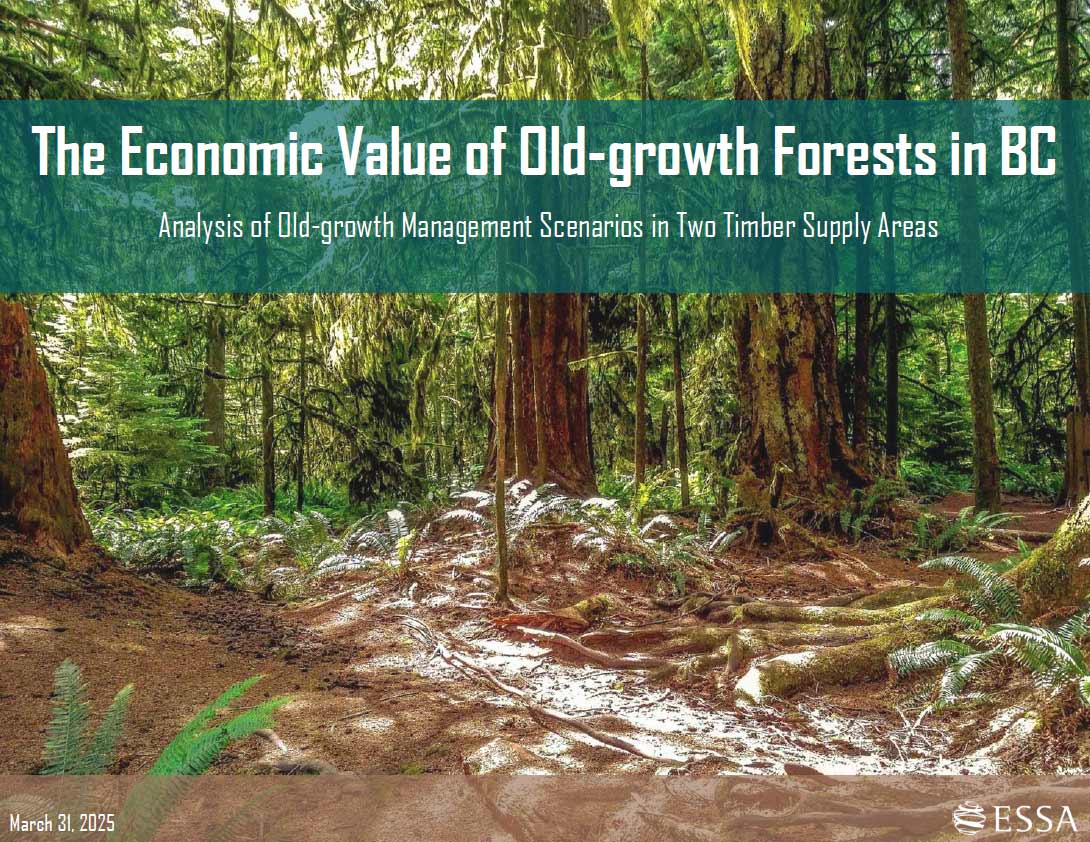Are BC’s Old-growth Forests Worth More Standing?


Are old-growth forests worth more standing? A report released today by ESSA, and led by Dr. Cedar Morton, suggests yes. The report presents findings that decision-makers and forest landscape planning tables can consider when balancing conservation of non-timber ecosystems services with timber production. The report, titled “The Economic Value of Old-growth Forests in BC: Analysis of Old-growth Management Scenarios in Two Timber Supply Areas”, quantifies the economic benefits of deferring harvest of varying amounts of old-growth. The study applies an approach previously piloted on BC’s coast in Port Renfrew to the BC interior’s Prince George and Okanagan Timber Supply Areas (TSAs).
Our findings indicate that fully protecting old-growth forests in the Prince George TSA could yield an additional $33 billion in net economic benefits over 100 years compared to a case with no extra deferrals. Similarly, in the Okanagan TSA, the net benefit of full protection could reach $10 billion. These amounts primarily reflect the high economic value of carbon storage in mitigating climate change, which outweighs potential losses from timber production.
Even if the province’s current recommendation to defer 2.6 million hectares of priority old-growth forest were fully implemented in these two TSAs, the combined net benefits from carbon storage, forest-based recreation and tourism, harvest of non-timber forest products, and education/research opportunities would outweigh net benefits from timber production, for a total net benefit of over $10 billion over 100 years (both TSAs combined).
The study considered only a small subset of ecosystem services provided by old growth forests, so our results are likely an underestimate of old-growth’s total economic value. Other crucial services like maintenance and preservation of cultural heritage and identity, water quality regulation, air quality regulation, and wildfire mitigation were not quantified in the current iteration of this approach.
These results emphasize the need for a broader evaluation approach to support decision-making about BC’s forests and reinforces calls for a paradigm shift in how these forests are managed – one that considers a wide range of long-term benefits from healthy resilient forests. The study also underscores the importance of improved forest wildfire management and the exploration of conservation finance mechanisms to support the economic transition away from old-growth harvesting.
The report is now available at the link below. We have also included a supplementary document that provides answers to frequently asked questions and a summary of methods updates since the Port Renfrew pilot study.
Report [View PDF]
FAQs and Methods Updates [View PDF]